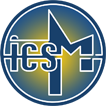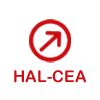Impact of gamma dose rate on the alteration of nuclear glass in geological disposal conditions
Résumé
In France, the chosen containment option for long-lived high-level radioactive waste from spent fuel reprocessing is vitrification in a borosilicate glass matrix. Contact with groundwater is the main source of release of radionuclides contained in glass. The latter are responsible for the self-irradiation of the glass which modifies its alteration kinetics [1]. The aim of R&D studies is to predict the long-term behavior of nuclear glass, in order to help justify the safety of the repository. The physical and chemical stability of glass on a geological timescale therefore needs to be studied, which requires assessing the response of glass to radiation emitted by nuclear waste, as well as its behavior when subjected to alteration by water.
Among the radioactive wastes contained in glass, fission products lead to beta decays and gamma transitions, while minor actinides generate alpha decays. Several methods are available to study the effects of irradiation on glass alteration. Alteration experiments are often carried out on samples pre-irradiated with ions or electrons to simulate the damage created by the different decays and transitions on the material. However, it is also important to study the effects of irradiation on the alteration solution and the possible impact of its radiolysis on alteration kinetics. To this end, experiments are being carried out at the Gammatec facility (STERIS, Marcoule), combining underwater alteration and gamma dose rate. Unitary titanium containers containing glass and water are placed in a temperature-controlled enclosure at 90°C, near to a 60Co source that generates a gamma dose rate of around 1,200 Gy/hr. At regular intervals, containers are sampled and solution and solid analyses are performed to assess the effects of the gamma dose rate on alteration kinetics.
This presentation will cover the study methodology and the experimental system used, and will be completed by an illustration of some results currently being acquired on a non-radioactive glass chemically simulating the nuclear glass used in France.
Domaines
Matériaux| Origine | Fichiers produits par l'(les) auteur(s) |
|---|


